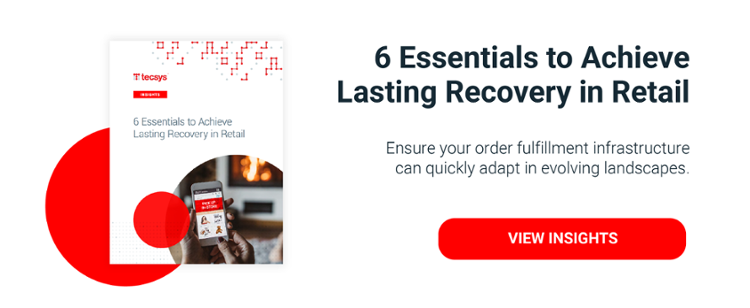How to Prepare for the Future of Retail Logistics

It’s been a year like no other for people and businesses — most notably in the retail industry. In 2020, even non-tech-savvy consumers had to learn how to order online and the industry was forced to compress a half-decade of transformation into half a year. Retailers had to quickly redesign their operating models — whether it was offering buy online pickup in-store (BOPIS), curbside pickup or creating micro-fulfillment centers and enhancing digital experiences — in order to deliver the best value and convenience to customers.
Was your business able to rapidly adapt to the new market landscape? If not, now is the time to prepare because the future of retail logistics is already here and it’s digital. In order to be successful in a digital world, you need to ensure your IT infrastructure is set up correctly to help you optimize business performance and improve service to your customers.
Prepare for the Future of Retail Logistics with Timely and Accurate Data
Your greatest investment should be in your data collection, data flow and analysis capabilities to support the intricate world of digital retail. Let’s face it, the retail end-to-end supply chain is complicated — from sourcing to customer purchases to returns — but you must be able to create clarity from this operational complexity. Today’s customers don’t just want, but expect immediate answers to what they believe are simple questions:
- Is it in stock?
- Where is it in stock?
- How long will it take to get my order?
- How much is my total cost?
- What are the return policies?
The only way to quickly answer these questions is with the right data. As more consumers are jumping from stores to online to combined channels when making their purchases, your IT infrastructure must be optimized for omnichannel shopping so you can provide timely and accurate information to your customers on any channel. Let me highlight this point with an example. Let’s say a customer is shopping on her mobile device and is ready to make a purchase, but you have the data to present her with the option that the product is not only available and in stock at a local store, but it can be ready for pickup in four hours. Now the customer doesn’t have to pay shipping costs and she will get the product she wants almost immediately. That’s how you meet customer expectations and stay ahead of the competition.
Your Supply Chain Infrastructure is Key
Distributed order management and warehouse management systems that are specifically geared toward retail fulfillment are critical elements to your success and ability to execute the above scenario. Retailers must have a strong integration of physical and digital infrastructure to process incoming orders. From a technical perspective, this includes analyzing various fulfillment scenarios and executing the best fulfillment method for each specific order. For example, is speed required or is cost the main drive? From the physical perspective, this includes driving efficiency for pick and pack through optimized floor layouts and workflows. Automation tools like barcode scanners or voice picking will help drive workforce efficiency in this area.
Retailers that have a keen understanding of customer preferences and motivating factors for purchase will see better outcomes on their retail logistics strategy because they can offer a delivery method that will match the customer’s expectations. The analytics you can obtain will enable you to understand your customer, your performance and your profitability across all your channels. That is a powerful business benefit and the beauty of an end-to-end retail fulfillment solution.
Start Acting Like a First Responder
Consumers today are practically expecting retailers to respond to them like they are calling 911. They want immediate attention. This will require retailers to start acting like first responders. You must be able to anticipate needs, dispatch the necessary resources and know where those resources are always located.
As a retailer, it is imperative that you dedicate resources to create an IT infrastructure that gives you accurate data and can pivot quickly operationally. First and foremost, a strong supply chain infrastructure addresses the needs of the customers while being flexible enough to satisfy any new needs as the market changes. It then lays out all the necessary steps and analyzes cost efficiencies that could benefit your revenue. That’s how you prepare for the future of retail logistics.
Subscribe to our blog today to get all of our new posts and updates delivered to you. In the coming weeks, I’ll be continuing the discussion on the future of retail logistics with a blog about how to get your retail fulfillment channels integrated and retail transportation excellence at all miles.




